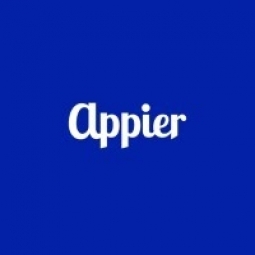Technology Category
- Analytics & Modeling - Computer Vision Software
- Cybersecurity & Privacy - Identity & Authentication Management
Applicable Industries
- E-Commerce
Applicable Functions
- Procurement
- Sales & Marketing
Use Cases
- Clinical Image Analysis
- Time Sensitive Networking
About The Customer
Clarins is a leading global beauty brand established in France in 1954. The brand is dedicated to listening to women’s needs and has a love for nature. For over 65 years, Clarins has offered personalized beauty solutions to make its customers feel special and loved. The brand incorporates plants and organic ingredients in its formulas to produce the most natural, luxury skincare products. Clarins has established its own e-commerce shop to discover more potential and valuable shoppers among its main target audience: 25+ year-old females.
The Challenge
Clarins, a leading global beauty brand, faced challenges in acquiring new shoppers and pinpointing high-value shoppers in an increasingly crowded online shopping market. The brand's lack of a marketing automation tool compounded this challenge, as it needed an efficient way to analyze millions of data signals, including user interests, behavior, and frequency, to identify high-value shoppers and display captivating messages to them at the right time. Additionally, Clarins aimed to maximize revenue from existing campaigns without offering sitewide discounts that could potentially hurt its brand image. The brand sought a strategic approach to convert more online visitors into shoppers, hoping to reach the right shoppers with the right incentive at the right time for a better conversion rate.
The Solution
Clarins leveraged Appier’s CrossX and AiDeal solutions to overcome its challenges. CrossX’s AI technology helped Clarins identify and target high-value customers and convert hesitant shoppers into immediate buyers. By analyzing existing customers’ interests and behaviors, CrossX identified high-value shoppers, enabling Clarins to scale up their campaigns accordingly. Once Clarins identified its valuable target segment, it displayed campaign ads only to this customer segment who is likely to purchase, successfully reducing its CPA by 30%. Clarins also used Appier’s AiDeal solution to predict the purchase intent of shoppers by capturing users’ behavioral data and calculating each user’s hesitancy level. AiDeal helped Clarins present a pop-up with a time-limited special gift promotion instead of a discount promotion to trigger hesitant buyers to purchase, allowing Clarins to maintain its image as a luxury brand and increase the CVR by 44%.
Operational Impact
Quantitative Benefit

Case Study missing?
Start adding your own!
Register with your work email and create a new case study profile for your business.
Related Case Studies.

Case Study
Digital Transformation of Atlanta Grout & Tile: An IoT Case Study
Atlanta Grout & Tile, a Tile, Stone & Grout restoration company based in Woodstock, Georgia, was facing challenges with its traditional business model. Despite steady growth over the years, the company was falling behind the web revolution and missing out on the opportunity to tap into a new consumer base. They were using independent software from different vendors for each of their department information and workforce management. This resulted in a lot of manual work on excel and the need to export/import data between different systems. This not only increased overhead costs but also slowed down their response to clients. The company also had to prepare numerous reports manually and lacked access to customer trends for effective business decision-making.

Case Study
IFFCO Boosts IT Performance and Innovates Agriculture with Oracle Cloud
Indian Farmers Fertiliser Cooperative Ltd. (IFFCO), the world’s largest manufacturer and marketer of fertilizers in the cooperative sector, was facing several challenges in its quest to innovate and improve the livelihood of farmers in India. The organization had recently launched a new product, nano urea, which brought new demands to IFFCO’s cloud computing needs. The organization needed a reliable cloud vendor to support the processes of 6–7 new manufacturing plants during the upcoming year, enhancing its production capability 300–350 million bottles of nano urea to meet increasing demand. IFFCO’s cloud adoption was driven by a need to innovate. The organization wanted capabilities for a dynamic business that can adapt to the changing needs of the market while growing fast. However, it was inhibited by rigid on-premises data center deployments and the overhead of maintaining legacy systems. IFFCO wanted to apply the elasticity and availability of cloud for improving overall performance of applications at lowest possible operational overhead. Lastly, IFFCO needed to provide the benefits of its technology to all its stakeholders, including employees, members, transporters, and farmers, some of whom have limited literacy. To accommodate all stakeholders, IFFCO wanted to add a voice interface to its applications.
Case Study
7-Eleven Philippines Enhances Customer Support with Freshdesk
7-Eleven Philippines, a pioneer of 24-hour convenience stores in the country, was facing challenges with its customer support system. The customer support was outsourced to an external vendor, which resulted in limited visibility into customer query patterns and performance metrics. The company had no transparency into the vendor's analytics and could not validate their reports. They also had no visibility into the volume of calls, number of abandoned calls, etc. due to the use of the vendor’s telephony solution. This lack of control and visibility into customer support led the team to decide to bring the entire function in-house. They began exploring helpdesk solutions that would enable them to build a strong in-house support team.

Case Study
Cloud4com: Delivering Efficient and Secure SAP HANA Cloud Services
Cloud4com, a leading provider of IT infrastructure and data center services, recognized the challenges and costs companies face when upgrading their on-premises infrastructure to meet the demands of SAP HANA in-memory technology. With the introduction of SAP HANA and SAP's decision to end support for all other databases from 2025, Cloud4com saw an opportunity to expand its services to a larger customer base. However, SAP HANA is a resource-intensive technology that requires companies to deploy powerful and costly hardware platforms. Businesses often overspecify the hardware, resulting in underutilization within the software's lifecycle. To capitalize on the opportunity presented by SAP HANA, Cloud4com aimed to create a cost-effective cloud platform for HANA and began working on obtaining the SAP Tailored Datacenter Integration (TDI) certification. A critical element was selecting the right operating system that would meet SAP’s standards and maximize the availability and performance of their customers’ SAP landscapes.
Case Study
BrewDog's Customer-Centric Approach in Times of Uncertainty
BrewDog, a Scottish-born craft beer business, faced a significant challenge during the COVID-19 pandemic. With their bars closed, the company saw a surge in online orders and customer inquiries. The customer service team, which handles all e-commerce customers and general brand-related queries, was overwhelmed with the sudden increase in activity. The team was dealing with up to 2000 tickets a day during the lockdown, a significant jump from the usual 150-200 tickets. The fast-paced nature of BrewDog's operations, with new projects and initiatives launching daily, further complicated the situation. The company's existing processes, which were fairly manual, were not equipped to handle this surge in volume. The challenge was to quickly adapt and streamline their customer service operations to continue providing excellent service during these uncertain times.

Case Study
Global Timeshare Company Accelerated Its Digital Marketing and E-commerce Engine
The client's go-to-market teams weren't accustomed to attracting new buyers in the digitally networked world. These prospects come from an evolving demographic — millennials and Gen Z who were increasingly adopting the new ways of evaluating options online and making reservations.There were three key challenges that the client was facing.Outdated and aging systems (legacy core)Inadequate web presence and e-Lack of predictive customer understanding and analytics







